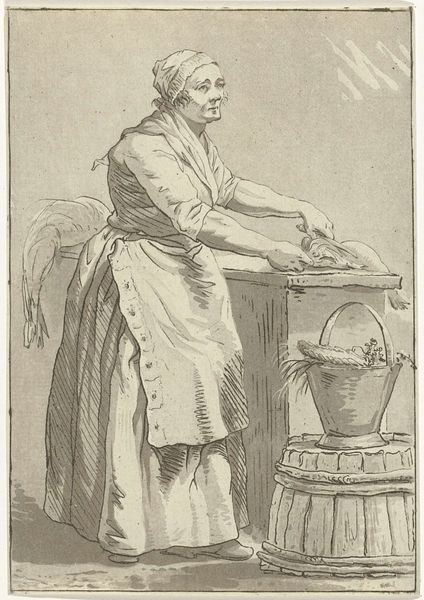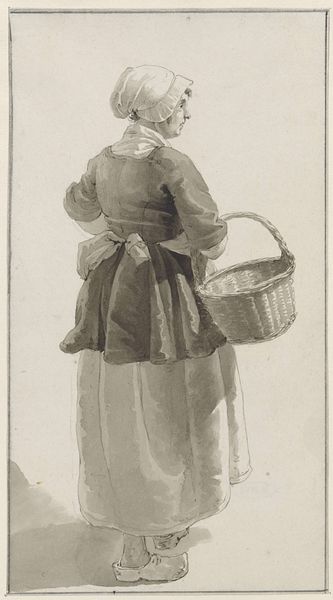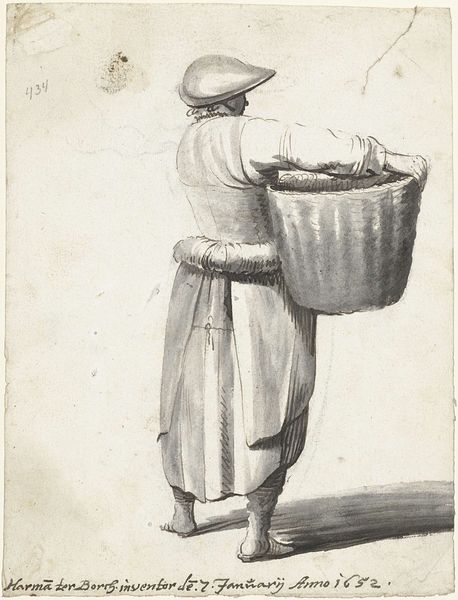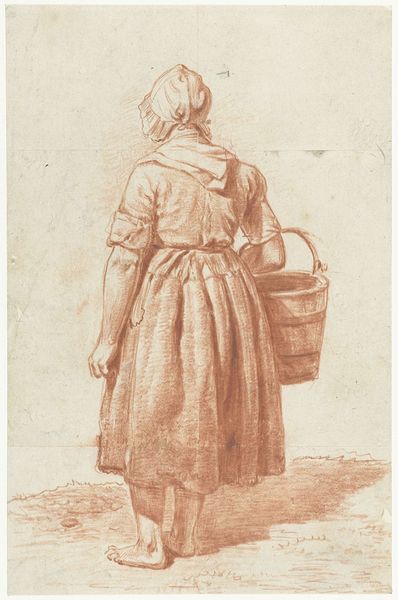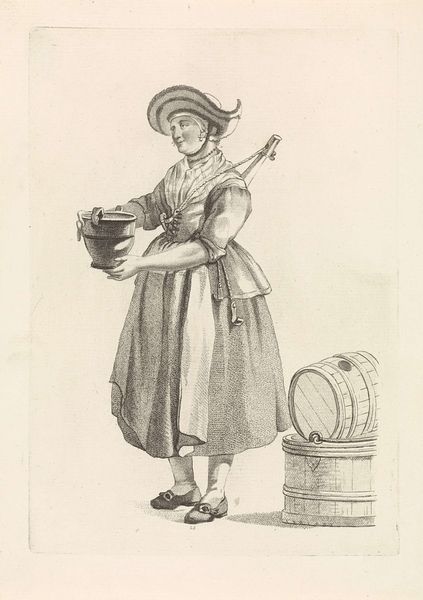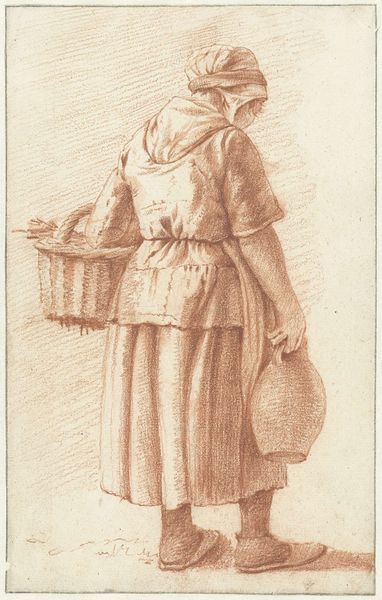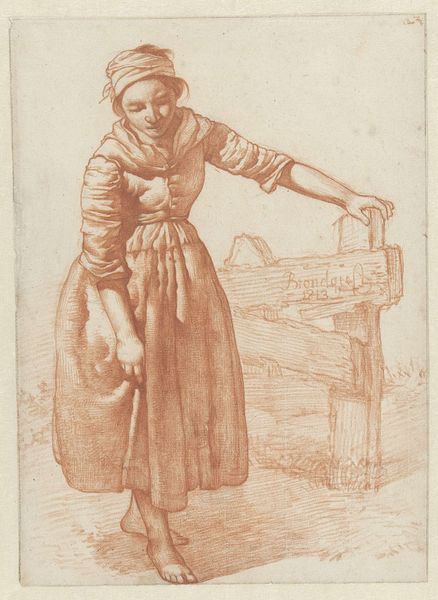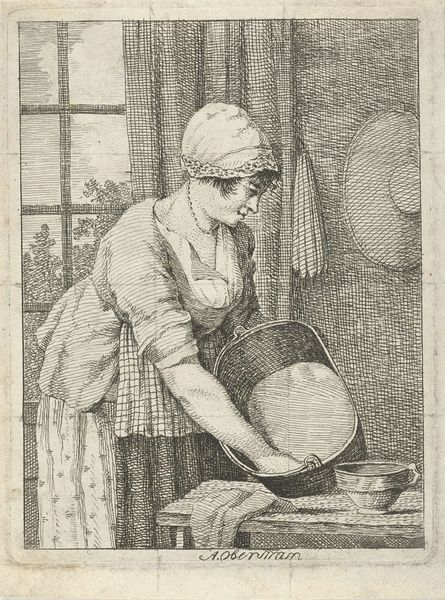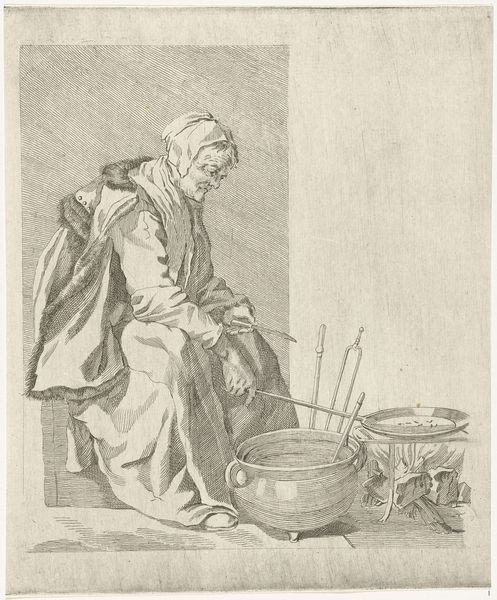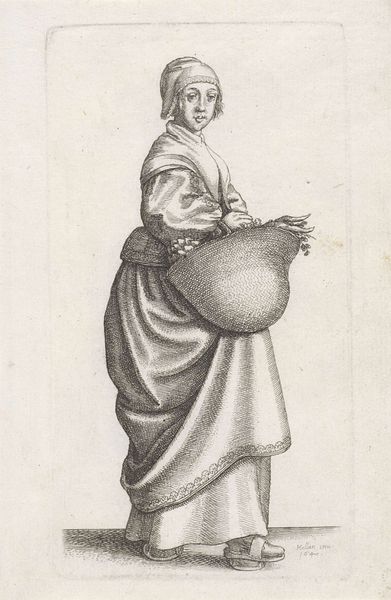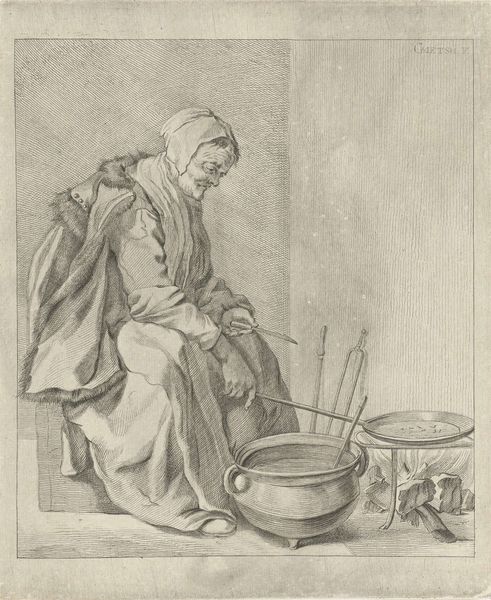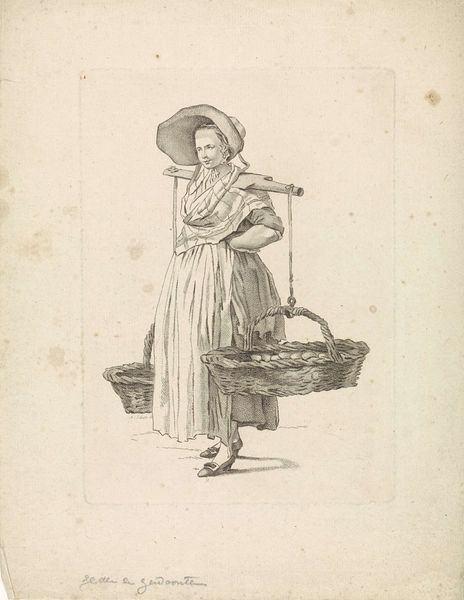
Staande melkvrouw, die melk uitgiet in een koperen kan 1797 - 1838
0:00
0:00
johanneschristiaanschotel
Rijksmuseum
drawing, graphite
#
drawing
#
charcoal drawing
#
pencil drawing
#
graphite
#
portrait drawing
#
graphite
#
realism
Dimensions: height 243 mm, width 181 mm
Copyright: Rijks Museum: Open Domain
Curator: This is a drawing by Johannes Christiaan Schotel, dating from 1797-1838, entitled "Standing Milkmaid Pouring Milk into a Copper Can." It's currently held in the Rijksmuseum. Editor: The stark simplicity really strikes me. It's almost ghostly, the grey hues lend a kind of quiet solemnity to such an everyday act. Curator: The choice of medium certainly contributes. Graphite and charcoal—materials directly linked to the earth, grounding the image in a tactile reality. It's interesting to note the lack of idealization, portraying labor with such unadorned realism. Editor: Exactly. You see the labor in her posture, in the solid rendering of her hands, even in the copper can. I'm immediately curious about the conditions of this labor—where would she be selling this milk, and how would this exchange shape her social reality? Curator: The copper can, so ordinary yet carefully rendered, speaks volumes. It’s a mundane object elevated through attention and placement—it suggests not only material transaction but, potentially, even ideas of female roles in society and concepts around providing nourishment to the culture around them. Editor: Indeed, the careful rendering of such a functional object hints at the social status of craft. Was this made for a specific buyer or sold in the marketplace? Such labor and domestic imagery in this context might speak to rising bourgeois taste valuing scenes of daily life. Curator: Absolutely, such themes can reflect the moral climate of an era—simplicity, virtue, and industriousness celebrated visually. It’s fascinating how such humble subjects can embody quite complex ideological underpinnings. Editor: The choice of materials – graphite, charcoal, paper - speaks to availability, affordability and accessibility, therefore also the economic reality both for artist and subject. It suggests something less 'high art,' more accessible imagery. Curator: The economy of its construction speaks volumes too. It captures an essential scene with efficiency, which in turn allows viewers to understand values in plain, unvarnished language. Thank you, this exploration into social and material production in contrast with what she culturally suggests, opens to us fresh insights here. Editor: Agreed, this image rewards the act of seeing in front of just perceiving. This focus makes us wonder: Who consumes it? The viewer's status, like the Milkmaid's, affects everything.
Comments
No comments
Be the first to comment and join the conversation on the ultimate creative platform.
